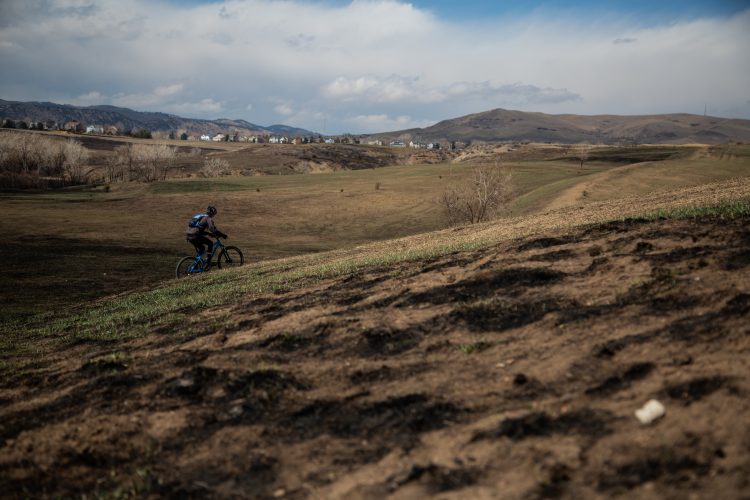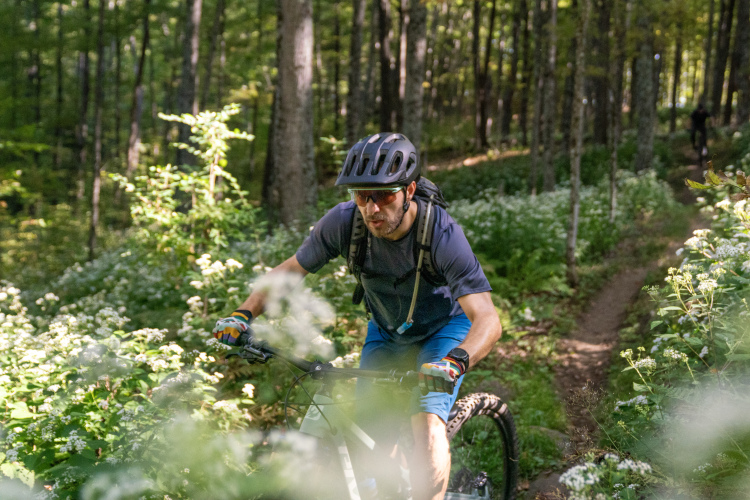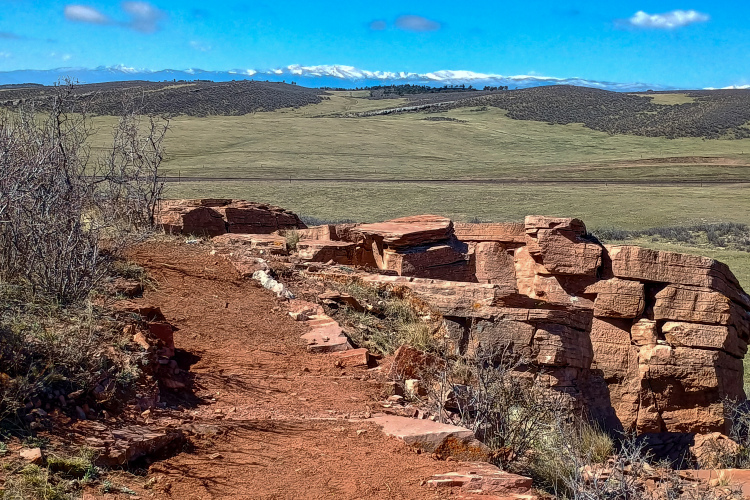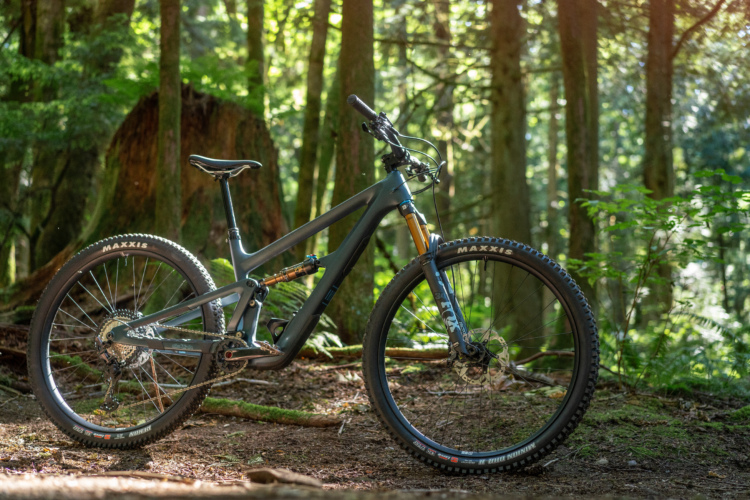
The hills above the Altadena, Sierra Madre, and Pasadena neighborhoods near Los Angeles, CA, are home to some of the most popular mountain bike trails in the metro area. Long fire road climbs take riders 2,000-5,000 feet up into the Angeles National Forest, and ripping singletrack plunges back down to the trailheads. Many of these trails date back to the 1920s and 30s, built by the Civilian Conservation Corps. They are typical of riding in Southern California — sunny, exposed, steep, and switchback-laden — what mountain bikers might refer to as “natural” rather than overly manmade.

Many epic rides in the San Gabriel Mountains have been burned
The zone is home to the popular Mount Wilson, Mount Lowe, Middle Sam Merrill, and Sunset Ridge trails. “Altadena had become LA’s mountain biking soul,” local rider Sean Perry told me. “I don’t think many people would dispute that.” Unfortunately, it’s this same zone that burned in the Eaton Fire, sparked on January 7, 2025. The Palisades Fire also damaged trails in the Santa Monica Mountains to the west, as did the Hughes Fire near Santa Clarita. In total, dozens of trails will need rehabilitation, a process that will stretch on for years.
“We did see fire on some of our most popular and most beloved front country trails with this fire, unfortunately,” Jay Marion, President of the Mount Wilson Bicycling Association (MWBA), said. MWBA builds and maintains trails on the 5,710-foot Mount Wilson and in surrounding areas of the Angeles National Forest, which were impacted by the Eaton Fire. The forest and other public lands remained closed.
The fire also reached trails that are more backcountry-style experiences, such as the Idlehour Trail and Henninger Flats. “It’s really a special setup, this special area, and it’s going to be different for the next few years and for the foreseeable future,” Marion said. “So that’s, that’s something we’re all still dealing with, figuring out how to move forward.”
Initial surveys of the damage suggest that most of the area is what’s described as a “moderate burn,” where there are still some vegetation remnants intact. Other smaller areas are classified as “severe,” where it looks like you are on the surface of the moon.
Marion has not been able to access the burn area yet. On-the-ground assessments will paint a clearer picture of the extent of the damage, which are initially conducted by Forest Service staff. Historically, MWBA has been able to access burn areas within a year or so of fires, Marion said. Once charred hillsides have stabilized and there is a lesser threat of downed trees, mudslides, and other erosion, work can begin on re-benching trails, adding retaining walls, and working on drainage features.
Trail damage in the Palisades
In the Palisades, one of Perry’s favorite rides is the Backbone Trail from Will Rogers State Park, a 6-mile-long descent above the Pacific Ocean. It’s in the middle of the burn area, as are popular trails like Rogers Road and Sullivan Canyon. “Basically everything west of Malibu Creek State Park and the southern part of Malibu Creek is all closed and burned,” said Steve Messer, president of the Concerned Off-Road Bicyclists Association.
Also burned were Will Rogers’ historic home (where Hollywood filmed iconic Western movies), hiking trails in Topanga State Park, and trails and lands managed by the Mountains Recreation & Conservation Authority (MRCA) and the Santa Monica Mountains Conservancy.
Messer said it would take State Parks a month to assess the full damage and create a list of priorities. The soonest trails may open is estimated to be May. “There’s a famous bridge on Rogers Road called Chicken Ridge Bridge, and the bridge actually melted, so that’s going to be a major, major expense of probably $60-80,000 to replace,” he said.

Funding and timeline for trail reconstruction
Outdoor clothing and equipment company Arc’Teryx just donated $10,000 each to CORBA and two other organizations, but funding is a complicated puzzle that is prone to political influence. “There’s lots of uncertainty around FS funding, hiring, and changes in priorities under the new [Trump] administration,” Messer said.
Marion said that MWBA is comfortable with its level of funding, but the fires will certainly require additional expenses and volunteer muscle power. He stresses that mountain bikers need to be patient. The bulk of the grunt work and volunteer hours will be needed in a couple of years. “No amount of volunteering or money can stabilize a trail immediately after a burn in the Angeles National Forest; we got to let it regrow before we can go in and restore it,” he said. “As we see now, there’s mudslide warnings when it rains, there’s just a risk that all your work in restoring a trail, if you get in there too early, it’s literally washed away.”
A trail that’s received a lot of work from MWBA over the years is Sunset. Builders have been modernizing the multi-use trail to be more bike-friendly, removing steps and working on drainage. Marion described it as a “lab” for how to manage water and erosion in the area’s steep terrain.
Trails that didn’t burn will still be impacted, such as the popular El Prieto loop. Firefighters bulldozed in a fire break along the climbing portion of the ride, so the trail surface will need to be restored. It will be wider than it was and likely have different drainage needs that will need to be tweaked.
“We expect lots of downed trees, falling debris, rock slides, just due to the amount of wind that came through here,” Marion said of any number of non-burned trails. “So imagine hurricane damage, but with no rain. That’s what the neighborhoods that didn’t burn look like. That’s what our trails will look like, too.”
Wildfires are inevitable in California, and there is a statewide effort called the California Wildfire & Forest Resilience Task Force, which includes a recreation-focused work group. Messer is in the group, which describes itself as a “collaborative effort to align the activities of federal, state, local, public, private and tribal organizations to support programs and projects tailored to the priorities and risks of each region.”
As the fires are still smoldering, officials are encouraging the public to stay out of the burn zones. The Altadena Mountain Rescue Team has already responded to a rescue call for a hiker who illegally entered the burn scar and became disoriented by trail damage and lack of vegetation.
Of course, trails weren’t the only resources that have been damaged or destroyed by the fires. Matt Baffert is the CEO/President of Lowelifes Respectable Citizens Club, another trail-building organization in the area. Baffert lost his home to the fire, which also scorched the organization’s trail-building tools.
“Despite the Eaton Fire, trail stewardship is mental wellness therapy for me and our volunteers,” Baffert wrote on social media. “So after these devastating losses me and many other friends and strangers have suffered, it’s gonna be critical to the healing process to be able to continue to steward trails and offer our public service as a resource to the broader community.”











2 Comments
Feb 8, 2025
Feb 7, 2025